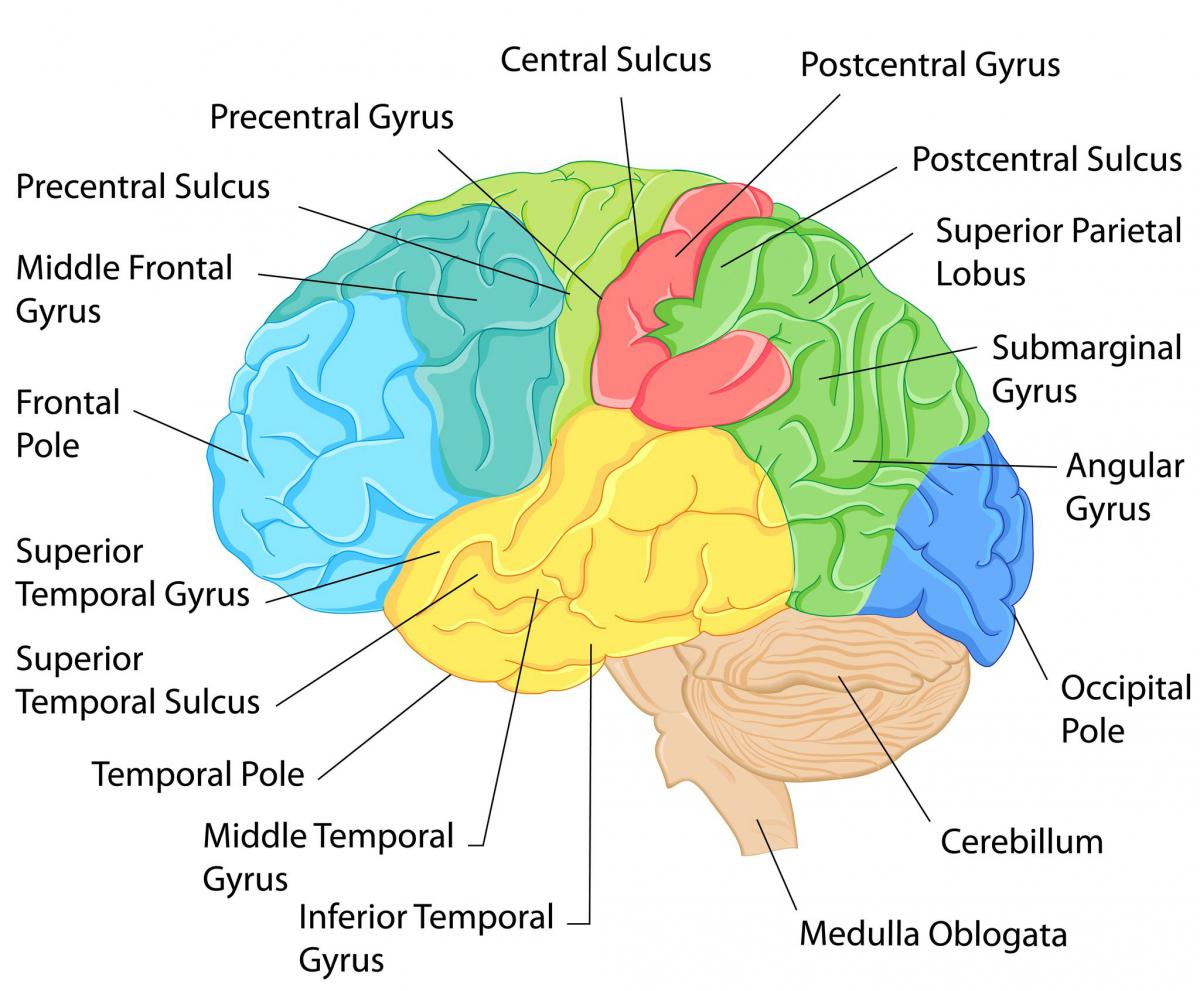 How often do you say to your child, “Pay attention?” Or, how often does a teacher reprimand a student for “not paying attention?” We tend to think that attention is something simple, either you are paying attention or you are not. But, it is actually much more complex than most people realize. For example, do you ever find yourself distracted enough when walking into a room to get something that you forget what you came into the room for? Or, have you ever been listening to an audio book only to realize that you stopped paying attention several pages back?
How often do you say to your child, “Pay attention?” Or, how often does a teacher reprimand a student for “not paying attention?” We tend to think that attention is something simple, either you are paying attention or you are not. But, it is actually much more complex than most people realize. For example, do you ever find yourself distracted enough when walking into a room to get something that you forget what you came into the room for? Or, have you ever been listening to an audio book only to realize that you stopped paying attention several pages back?
In fact, trying to figure out exactly what attention is, and why some children have more trouble attending than others, especially in school, has been the focus of psychologists for years. As adults, we realize that the ability to attend carefully to a task, ignore distractions and stick with it, is something that takes time for children to develop. But, what exactly is attention? Why is some information easier to attend to than other kinds? What is an attentional disorder? And, perhaps most important, are there ways to improve our attentional skills?
What is attention?
Perhaps the first attempt to define "attention" was made in The Principles of Psychology by William James. He wrote, "Everyone knows what attention is. It is the taking possession [in] the mind...of one....of several simultaneous objects or trains of thought." (James, The Principles of Psychology, 1890, page 403). But knowing what we think attention involves doesn't help us understand how this ability develops in children or why is it so difficult for all of us some of the time - and for some, a lot of the time. The fields of cognitive psychology and cognitive neuroscience have begun to help us understand how very complicated something that seemed so simple to William James, really is.
Attention redefined
Neuroscientists like Dr. Michael Posner  and his colleagues have helped us understand that attention isn't just one thing. There are several types of attention. To begin with, there are different components of attention that correspond to different connected brain areas (networks). Dr. Posner and colleagues have identified three of these: alerting, orienting and executive.
and his colleagues have helped us understand that attention isn't just one thing. There are several types of attention. To begin with, there are different components of attention that correspond to different connected brain areas (networks). Dr. Posner and colleagues have identified three of these: alerting, orienting and executive.
Alerting
You know that when you are alert you feel wide awake and responsive to what is going on in the world around you. An alert state is very important for performing any task well and we all know what it is like when we are groggy and mentally foggy, perhaps when we first wake up in the morning. There is a chemical, norepinephrine, that modulates alertness largely in frontal and parietal brain regions. Alertness can be triggered by warning signals of any kind which rapidly allow us to change from a resting state to being more receptive to a new stimulus; a good example is the yellow light on a traffic signal that prepares us for when the light changes to red.
Orienting
The second component of attention is orienting. When you are oriented, you know where you are, who you are with, the day and time and most important, what is needed to perform the relevant task at hand. We rely on orientation to efficiently navigate a large airport during a connection, for example. Our senses are very important for orientation, allowing us to take in visual, auditory and tactile information from the world around us and use it to figure out what is the most relevant information to accomplish a task. Navigating an airport during a tight connection requires looking for appropriate signage and maps, asking officials if necessary, noting the boarding time and figuring out how quickly we need to move to get to the correct gate on time.
Executive
The third component of attention that Dr. Posner and colleagues have studied involves the executive network. This is tied to our goals and helps us resolve competition for our attention when there are distractions or conflicts. We can think of this level of attention as akin to self-control, maintaining attention in a regulated and purposeful way to accomplish a goal. The areas of the brain involved are complex and distributed widely through the brain. The executive attention network enhances activity in brain regions related to our goals and inhibits conflicting activity. This control requires coordination of our executive functions (goals, priorities, organization), emotions and other cognitive functions like memory and knowledge so that irrelevant feelings or thoughts don't interfere with getting a job done. This kind of effortful control and self-regulation takes time to mature, and can be quite variable from person to person (and task to task). Executive attention (sometimes referred to as cognitive control) is highly correlated with success in school and later life.
Selective attention
One facet of executive attention known to be critical for academic success is selective attention. Dr. Courtney Stevens and her colleagues have studied the relationship between selective attention and academics over the past decade. Selective attention, depending on the activity, can involve one sense more than or in combination with others. For example, listening to an audio book or a newscast on the radio requires auditory selective attention while photography or drawing would require visual selective attention. When watching a newscast on TV we can use the visual information to augment our auditory attention. Dancing and athletics often require selective attention to movement and bodily senses, as well as visual and spatial attention to those moving nearby. For each of our senses, children need to learn to selectively attend. Dr. Alison Gopnik and her colleagues have studied the maturation of selective attention in young children as well as adults when they are in new environments. She has found that young children, as well as adults in a new stimulating environment (like a first trip to Paris during an exciting time like a honeymoon), are often global attenders - taking in many sights and sounds at once. That makes for a fun day at the park or vacation, but to get a job done or accomplish a goal, we need to be selective about what we pay attention to (and ignore).
What is an attention deficit disorder?
Selective auditory attention may be especially challenging, especially in today's world, where we are bombarded with rapidly changing information and frequent technological interruptions. For many children, moving from the world of multi-sensory experiences in play, sports and media (especially tablets and television) to sitting still and selectively attending to a teacher in a classroom can be particularly difficult. For some children, there appears to be a physiological limitation, beyond that expected for their age, on their ability to listen and learn on demand - this is referred to as an attentional deficit hyperactivity disorder (ADHD) if the difficulty involves both selective attention and behavioral control, or ADD if there is not a problem sitting still. Although ADHD and ADD are considered medical diagnoses and often treated with medication, there is evidence that attentional skills are malleable.
The good news: attention is trainable!
In fact, many scientists including Drs. Posner, Stevens and their colleagues have found that attentional skills are amenable to training. Dr. Stevens and colleagues found that a short (six week) period doing exercises in the Fast ForWord Language program, that train selective auditory attention in several different contexts (language listening tasks, two-tone rapid sequencing tasks, speech-sound discrimination tasks) resulted in improved auditory selective attention for listening to stories read aloud, among both language impaired and typically learning second graders compared to students who had a regular classroom curriculum but did not participate in the specific auditory attention exercises.
In an article reviewing the research on the relationship between selective attention and academic achievement, Dr. Stevens and her colleague Daphne Bavelier conclude, “there may be large benefits to incorporating attention-training activities into the school context” (page S44). Luckily, neuroscience-based interventions are now available to help educators build attentional skills in their students, to free them up so they can focus on covering curriculum content.
How did you do? Did you scan the page, get distracted by your phone (alerting attention), or stop mid-stream to think about your next vacation? Or did you maintain selective and executive attention all the way through the article? Let us know in the comments!
References:
Posner, M., Rothbart, M., Sheese, B and Voelker, P. (2014) Developing Attention: Behavioral and Brain Mechanisms. Advances in Neuroscience Article ID 405094.
Posner, M., Rueda, R. and Kanske, P. (2007) Probing the Mechanisms of Attention. In J.T. Caciopo, J.G. Tassinary & G.G. Berntson (eds), Handbook of Psychophysiology. Third Edition. Cambridge U.K.: Cambridge University Press (pp 410-432).
Stevens, C. and Bavelier, D. (2012) The role of selective attention on academic foundations: A cognitive neuroscience perspective. Developmental Cognitive Neuroscience 25:S30-S48.


Comments
Reading this article in the
Thank you for your comment
I have seen significant
Thank you for sharing your
I noticed that my mind
Great, thanks for sharing
Hello Martha. This is
I've been following your